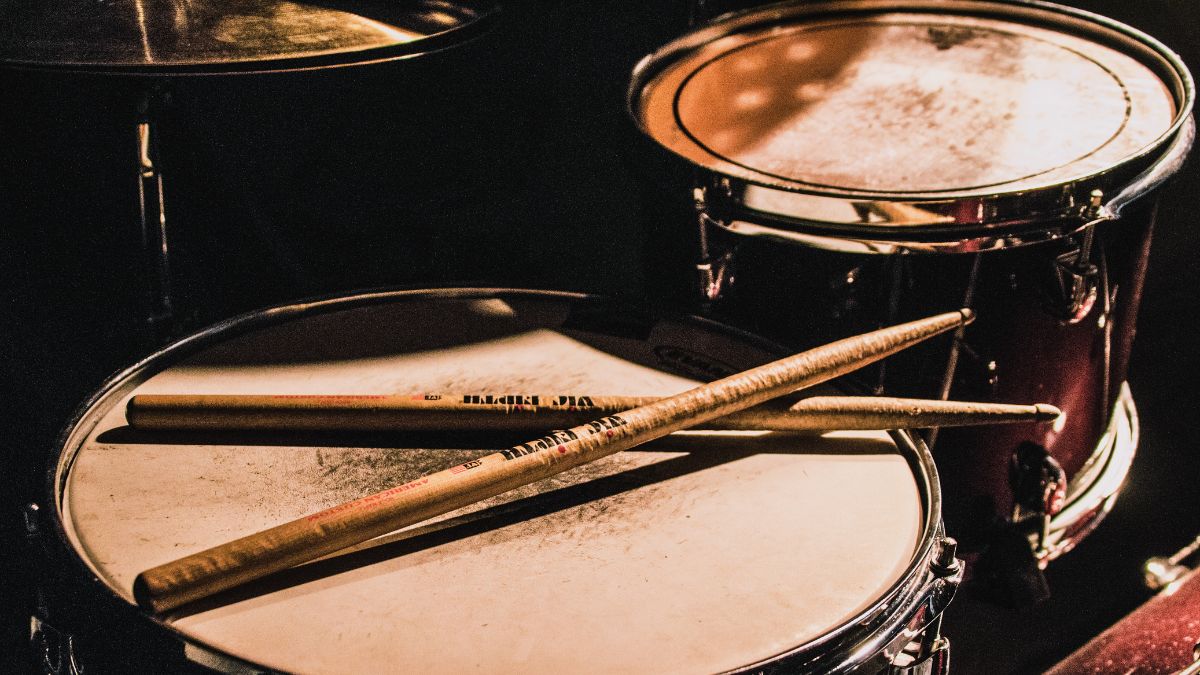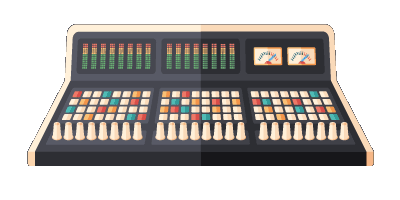Melody in Music: What is it and How to Use it in Your Compositions

Let’s talk about melody! Along with harmony and rhythm, Melody is one of the three fundamental building blocks of what makes music.
In this article, we'll explore what is melody in music and how to use melody in your compositions to take your music to the next level.
What is melody in music?
Melodies are powerful tools that harness sound to inspire emotion. When you hear the word “melody” what comes to mind? You might think of playing the right-hand part to “Heart & Soul” on the piano with a grandparent or belting out the chorus to your favorite pop song…
Melody is arguably the most important element in music. In this article, we’re going to dive deep into exactly what melody is and how you can use it in your compositions.
What Is the Difference Between Melody and Harmony?
Melody is a series of single notes, played or sung in an order that forms a single idea. Harmony is more than one note arranged and played together in, you guessed it, “harmony”.
In simple terms, the lyrics of a song are usually set to a melody, while the instruments playing underneath that melody create the song’s harmony. This varies from genre to genre, but generally, the melody will be the most prominent sound in live or recorded music.
Defining melody as “pleasant” is debatable. Obviously, “pleasant” can be subjective, as many different musical genres, styles, and cultures use melody in different ways. Let’s just think of melody as a movement. A series of notes that moves the song from one place to the next.
How does sheet music show melody?
Sheet music helps us to visualize and better understand the movement of a melody. A melody can ascend (go up in pitch), descend (down in pitch), and/or remain static (unchanged). Most melodies will use a combination of these three elements, rising and falling, to create motion and evoke different feelings.
When we look at written notation, we can easily see if the melody is rising or falling. Notes moving upwards on the staff represent higher and higher pitches, while those moving downwards correspond to lower pitches.
Each line and space on the music staff represents a note. If the note has an accidental (# or ♭) that raises or lowers the pitch, it will be written next to the note. For example, “C” and C#” would be written on the same space, with the “#” sign being placed before the note for “C#”. Keep this in mind when analyzing written melodies.
Written notation can also communicate dynamics and expressions, or the manner in which the melody should be played.
Dynamics tell us how soft or loudly a section or group of notes should be played, while expressions show us if the notes should sound smooth and connected (legato), or short and detached (staccato).
A quick fun fact: The terms “note” and “tone” are often used interchangeably. However, a “tone” is the sound itself, while a “note” is the written version of that sound or pitch!
How to use melodies in your music
Melody writing sounds deceptively simple, but mastering it as a craft is no small feat! Don’t get discouraged, our journey to becoming better melody writers starts here.
Let’s look at some different ways that you can begin using melodies in your music right now.
Instrumental melodies
Melodies are present everywhere in music, not just in vocals or as the song’s catchy main line. For example, many pieces contain several melodies, some being played by other instruments as solos, ad libs, or during intros and outros.
1. Write an instrumental intro melody
If you listen to “Get Into It (Yuh)” by Doja Cat, you can hear an intro melody played by a software instrument, which precedes the main vocal melody that enters at 0:11.
You can use this technique in two ways. You can either write a separate melody for your intro, or introduce the vocal melody on an instrument first!
2. Use a “counter-melody”
Another way to use instrumental melodies in your production and songwriting is to incorporate a “counter-melody”. A counter-melody is two different melodies being played at the same time. My favorite example of an instrumental counter-melody comes from “Reptilia” by the Strokes.
If you listen to the chorus at 1:26 you can hear not one, but TWO distinct melodies. One being sung by lead singer, Julian Casablancas, and the other being played on the electric guitar by Albert Hammond Jr.
Another great example of counter-melody is the bass line in Stevie Wonder’s “For Once in My Life”. The line is played by legendary bassist, James Jamerson, and has an epic melodic contour that compliments the vocal melody beautifully.
3. Use sampling to add melody to rap and hip-hop
An incorrect opinion that has circulated on the internet recently claims that rap isn’t music because it doesn’t have melody. Here’s why this is wrong and how you can use melody in your hip-hop production and writing.
There are clear melodies in Eminem’s “The Real Slim Shady”. The first melody comes in the form of a sample (an electric piano part borrowed from British singer, Labi Siffre) during the intro.
Similarly, Kendrick Lamar’s “HUMBLE.” features a hypnotic piano melody/riff that repeats throughout the track.
4. Don’t forget about “range”
When writing instrumental melodies, it’s important to remember that various instruments have different “ranges”. Range means the highest and lowest note that the physical instrument can reproduce. The piano has a very wide range of many octaves, while smaller instruments like violin and trumpet have less range.
Range can sometimes be stretched with electronic production and MIDI, but if your music will be played by real live musicians, you’ll want to keep in mind the limitations of their instruments to make sure that you don’t compose melodies that are impossibly high or low.
Vocal melodies
Writing vocal melodies is a bit trickier than instrumental melodies. This is because vocal melodies are typically set with written words or “lyrics”. Different syllables and sounds will “sing” differently, meaning that a melody that sounds great on saxophone or guitar might feel different or awkward when sung.
1. Record yourself to a loop
The best way to start composing vocal melodies is to loop a chord progression and start humming along. Don’t worry. Forming strong, cohesive melodies takes time and practice, and many of the world’s greatest ever melodies began as mumbles and whispers in the studio.
If you need a chord progression to write to, try out our Chord Progression Generator!
To make sure you don’t miss a thing, record yourself on your phone or computer. This way you’ll be able to go back and listen if you capture something brilliant but can’t quite remember exactly what you sang.
2. Simplicity is OK!
Don’t be afraid to keep things simple. Some of the best melodies ever written use just three or four notes. The verse melody of the Killers’ “Mr. Brightside” only uses one! The
3. Use variation.
In order for a song to have clear sections, such as a verse and chorus, each section must have a different vocal melody. One way to create variation in a melody is to use a combination of “steps” and “leaps”. “Steps” are when a melody moves up or down by a half or whole step. “Leaps” refer to skips of wider intervals, such as a perfect fifth or an octave. Great melodies contain a nice mix of both. Too much “step-wise motion” and your melody will sound redundant and predictable. Too many leaps and the part will no longer connect with the listener as a clear melody.
4. Try the “Swedish” method.
Most popularly used by Swedish hitmaker, Max Martin, this technique has us compose a melody first, and then write the lyrics of the song to fit that melody later. This ensures that the melody is the most important element in the song, with the rest of the song being built around it. You can even try recording an instrumental melody inside of a DAW and then looping it while you write the lyrics. Ariana Grande - God is a woman (Lyric Video)
5. Follow the song’s harmony!
When writing, using the same notes contained in the chord underneath will create the strongest melody. These are called “chord tones”. The other notes in the scale, “scale tones” will add “color” to the sound, but can sometimes weaken the melody’s power.
How to Play and Recognize Melodies by Ear
Learning to recognize and reproduce melodies by ear is the logical next step to enrich our musicianship.
You can probably already identify some basic intervals, scales, and chords. Playing the Melodix game on ToneGym is the perfect vehicle to practice analyzing melodies as a whole.
First, identify if the melody ascends or descends and if there are any wide leaps or skips. Additionally, listen for dissonant intervals that jump out like tri-tones or minor 2nds. These are easily identifiable and will help you narrow down which notes may be present.
For some bonus practice, try singing back melodies as well!
Exhale… What more can we say? It’s your turn to get creative. Go make music!



Comments:
Login to comment on this post